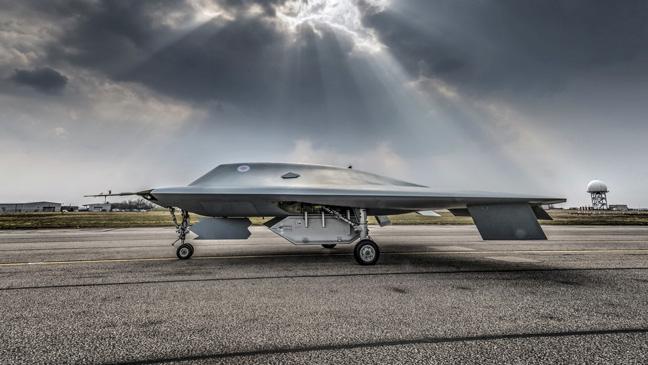
Unmanned aerial vehicles, known as drones, are changing the face of combat.
Whether they’re being used for surveillance or undertaking military offensives, the increased use of military drones means we’re heading towards a future where pilots keep their feet on the ground in mission control.
Britain is at the centre of the race to create the ultimate unmanned, undetectable aircraft. Here’s what you need to know about Taranis.
What is Taranis?
Named after the Celtic god of thunder, Taranis is an unmanned aerial combat vehicle drone with stealth capabilities, built by BAE Systems for the MoD. The delta-winged, finless craft was unveiled in 2010 and made a number secretive test flights between 2013 and 2015. The cost of the programme is now thought to be in excess of £200 million.
What is its purpose?
The Taranis stealth drone was designed to demonstrate multiple surveillance and combat tasks that help shape the future of drone design. Tests conducted in the Australian desert have included complete stealth flight and simulated weapons release tests.
A post on the BAE website explains: “The aircraft was designed to demonstrate the UK’s ability to create an unmanned air system which, under the control of a human operator, is capable of undertaking sustained surveillance, marking targets, gathering intelligence, deterring adversaries and carrying out strikes in hostile territory.”
Will Taranis see combat?
No. The Taranis drone was built for demonstration purposes only, but it will inspire a fleet of aircraft that will someday see battle. However, as a result of the test, BAE says “the UK has developed a significant lead in understanding unmanned aircraft which could strike with precision over a long range whilst remaining undetected”.
How fast can Taranis fly?
The Taranis stealth drone, which has a wingspan of 10 metres, can hit speeds of 700mph - exceptionally close to breaking the sound barrier. If a supersonic, pilotless plane, undetectable by radar and carrying payload of weapons sounds scary, that’s because it is.
How is Taranis flown?
Taranis is flown by a specially trained ‘pilot’ who can manually control the craft from a remote location. However, it does have an autonomous flight mode in which it is trusted to ‘think’ and carry out missions of its own accord.
“It can self-navigate within a boundary of set constraints,” Jon Wiggall, the lead flight engineer said of Taranis earlier this year.
“It does have limitations on what we give it in the mission plan – it can only fly in certain areas – but it does think for itself, it will navigate, and it will search for targets.”
There’s also an automatic mode where it is programmed to follow a flight path.

How does it fly under the radar?
There are a number of factors involved in the meeting of the stealth challenge, including the design and materials used in constructions.
The drone uses a secretive communication system that enables it to communicate with home base without giving away its position to would-be enemies.
BAE engineers were forced to redesign the engine inlet and exhaust in order to stop the engine’s thermal image betraying its presence to enemy radar. Conrad Banks, Rolls-Royce's chief engineer said in 2014 it was about “minimising any sign there is an engine there”.
But can Taranis achieve true stealth capability?
In May this year, Paddy Bourne, chief engineer for UCAVs at BAE refused to confirm whether Taranis had been able to completely avoid radar detection during tests. Referring to the Ministry of Defence, he said “the customer is very happy.”
What’s next for Taranis?
Right now it appears as though Taranis’s flying career is over. The data acquired from the trio of test flights is currently being analysed, and that knowledge will be fed into the development of new drones under the Anglo-French Future Combat Air System (AFFCAS). It’ll also inform how the RAF will use manned and unmanned jets in future combat situations.
So, what is the AFFCAS?
Britain and the EU may be breaking up, but we’re still playing nice with France when it comes to security. In March, following the completion of a feasibility study, the two countries announced a £1.5 billion bilateral agreement to build prototype combat drones. Full-scale development will begin in 2017.

No comments:
Post a Comment